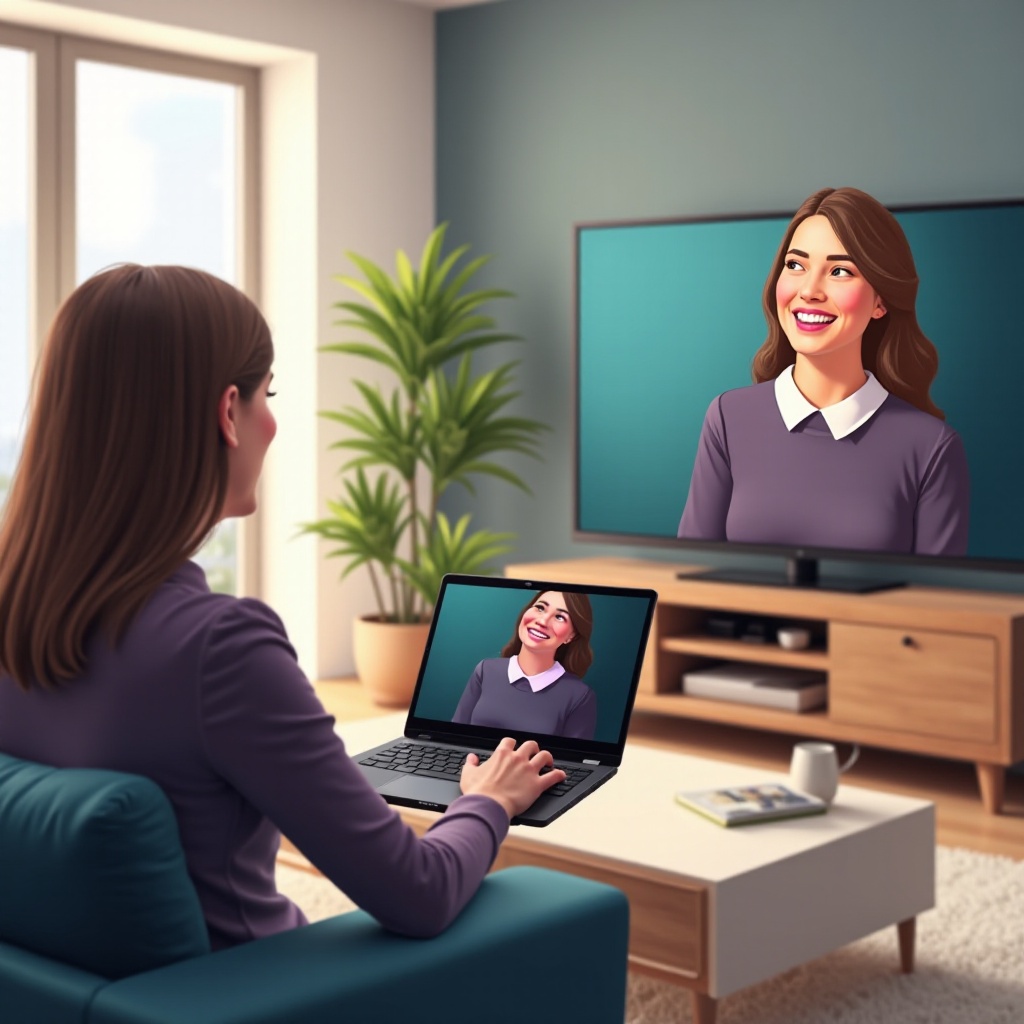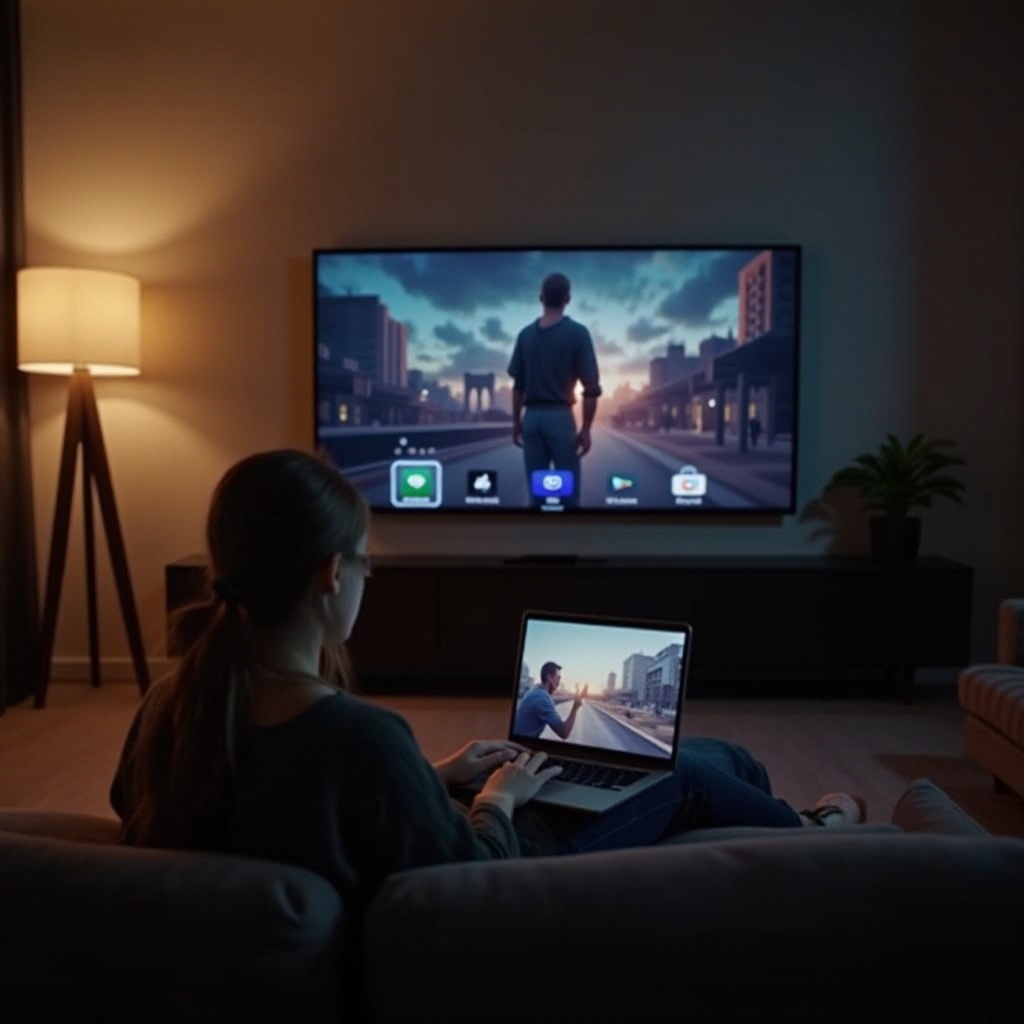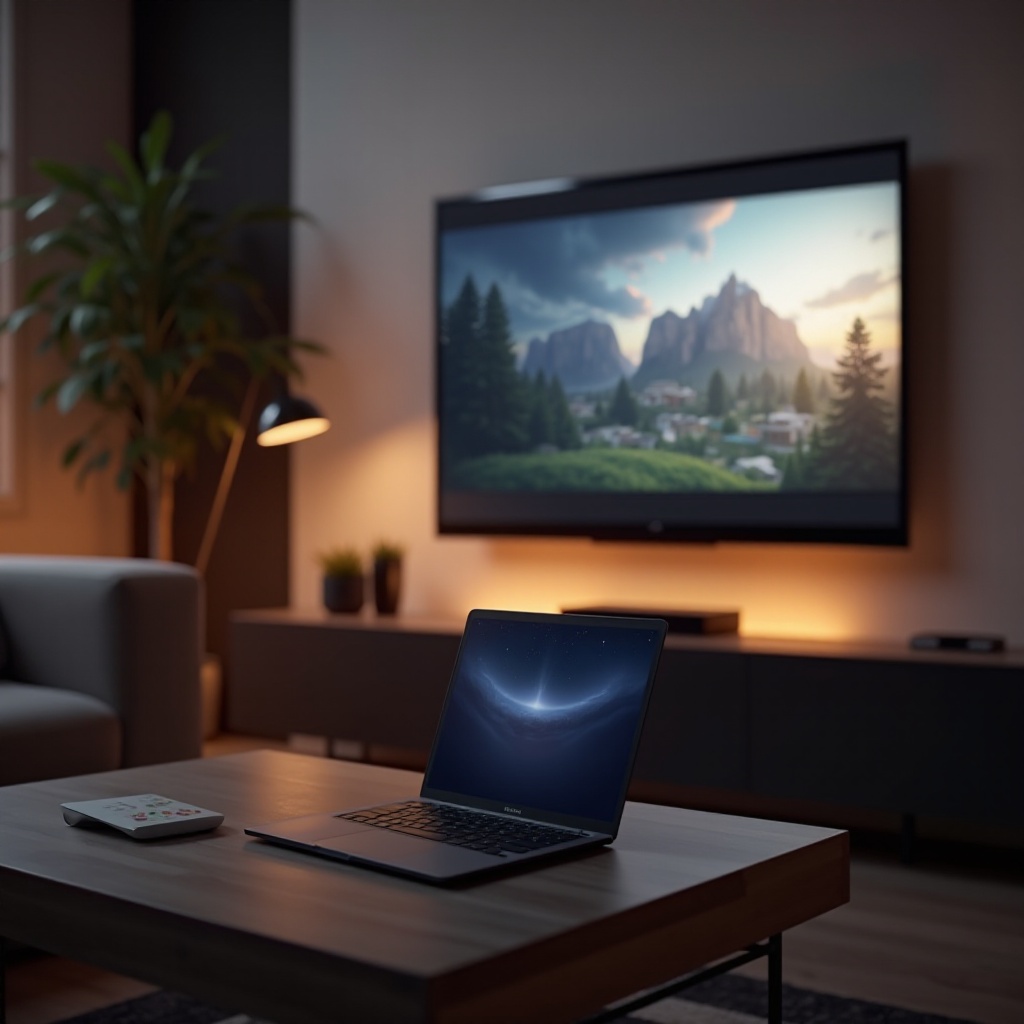Introduction
For many Chromebook users, the lack of an HDMI port poses a perceived limitation when it comes to streaming video content to a TV. However, numerous wireless alternatives can bypass this issue, making it simpler to enjoy your favorite videos on a larger screen. This article will guide you through a range of options, including the use of Chromecast, smart TV capabilities, alternative streaming devices, and third-party apps. By the end, you’ll have all the information needed to choose the best method for your needs.

Understanding Wireless Casting Technologies
Before diving into the specific tools and devices, it’s essential to understand wireless casting technologies. These technologies enable the transfer of video and audio signals from your Chromebook to your TV without the need for a physical connection.
Wireless casting typically relies on a Wi-Fi network to transmit data, ensuring that both the Chromebook and the TV or streaming device are connected to the same network. There are two main methods:
- Mirroring duplicates your Chromebook screen on the TV, showing everything you do on the laptop.
- Casting allows you to stream media directly from an app to the TV, freeing up your Chromebook for other tasks.
Understanding these concepts will help you better navigate the various options available to you.
Using Chromecast for Video Streaming
One of the most popular methods for streaming video from a Chromebook to a TV without an HDMI connection is using a Chromecast device. Google Chromecast is a small device that plugs into your TV’s HDMI port and allows you to stream content over Wi-Fi.
Setting Up Your Chromecast
- Plug the Chromecast into your TV’s HDMI port and connect it to a power source.
- Ensure your TV is set to the HDMI input connected to the Chromecast.
- Download and open the Google Home app on your Chromebook.
- Follow the in-app instructions to set up your Chromecast on your Wi-Fi network.
Casting Video to Your TV
- Open the Chrome browser on your Chromebook.
- Navigate to the video you want to cast (YouTube, Netflix, etc.).
- Click on the three vertical dots in the upper right corner of the browser.
- Select ‘Cast’ and choose your Chromecast device.
You should now see your video playing on the TV screen, leaving your Chromebook free for other activities.
Leveraging Built-in Smart TV Capabilities
If your TV is relatively new, there’s a good chance it has smart capabilities built-in, allowing you to stream video directly without additional devices. This method may be especially convenient if you use it already for streaming services like Netflix or Amazon Prime.
Connecting Your Chromebook to a Smart TV
- Make sure your TV and Chromebook are connected to the same Wi-Fi network.
- Press the ‘Home’ button on your TV remote and navigate to the Screen Mirroring or Cast option.
- On your Chromebook, open the Chrome browser.
- Click on the three vertical dots in the upper right corner and select ‘Cast.’
- Choose your TV from the list of available devices.
With smart TV capabilities, you can directly stream content from various apps like Netflix, Hulu, and YouTube without needing an intermediary device.

Exploring Alternative Streaming Devices
While Chromecast and smart TVs are popular choices, there are several other devices you can use to stream video from your Chromebook to your TV. These devices often offer further features and can be useful in different scenarios.
Amazon Fire TV Stick
- Plug the Fire TV Stick into your TV’s HDMI port and power it up.
- Navigate to the ‘Mirroring’ option on the Fire TV Stick interface.
- On your Chromebook, open the Chrome browser.
- Click the three vertical dots and select ‘Cast.’
- Choose your Fire TV Stick from the list.
Roku
- Plug the Roku into your TV’s HDMI port and connect it to a power source.
- Access the Home screen on your Roku.
- On your Chromebook, open the Chrome browser.
- Click the three vertical dots and select ‘Cast.’
- Select your Roku device from the list of available devices.
These devices offer a versatile way to stream video content, with additional features like access to various streaming apps.

Utilizing Third-Party Apps and Browser Extensions
Sometimes, built-in casting options or additional hardware might not be available. In these cases, third-party apps and browser extensions can bridge the gap. These apps and extensions are a lifesaver for various streaming and file types.
Popular Third-Party Apps
- AllCast: This app enables you to stream local videos and photos from your Chromebook to your TV. Install the app on both your Chromebook and cast-enabled device.
- Plex: This media server app organizes video content on your Chromebook and streams it to your TV via a browser or app.
Browser Extensions
- Videostream for Google Chromecast: This Chrome extension allows you to stream videos directly from your Chromebook. Install the extension, open it, and select the video you want to play.
These apps and extensions can provide a workaround when other methods aren’t viable, making them essential tools in your casting toolkit.
Conclusion
In summary, streaming video from a Chromebook to a TV without HDMI output is not only possible but also quite straightforward with the right approach. Whether you opt for a Chromecast, use your TV’s smart capabilities, or explore alternative devices and third-party apps, each method has unique advantages. By understanding the basics of wireless casting and exploring your available options, you can enjoy a seamless viewing experience on the big screen.
Frequently Asked Questions
Can you use a Chromecast on any TV?
Yes, as long as the TV has an HDMI port and can connect to Wi-Fi, you can use Chromecast.
Are there any other alternatives if my TV doesn’t support casting?
Yes, you can use devices like Amazon Fire TV Stick or Roku to enable casting capabilities.
What should I do if video quality is poor while casting?
Ensure that both your Chromebook and TV are connected to a strong Wi-Fi signal and that no other devices are heavily using the network bandwidth.